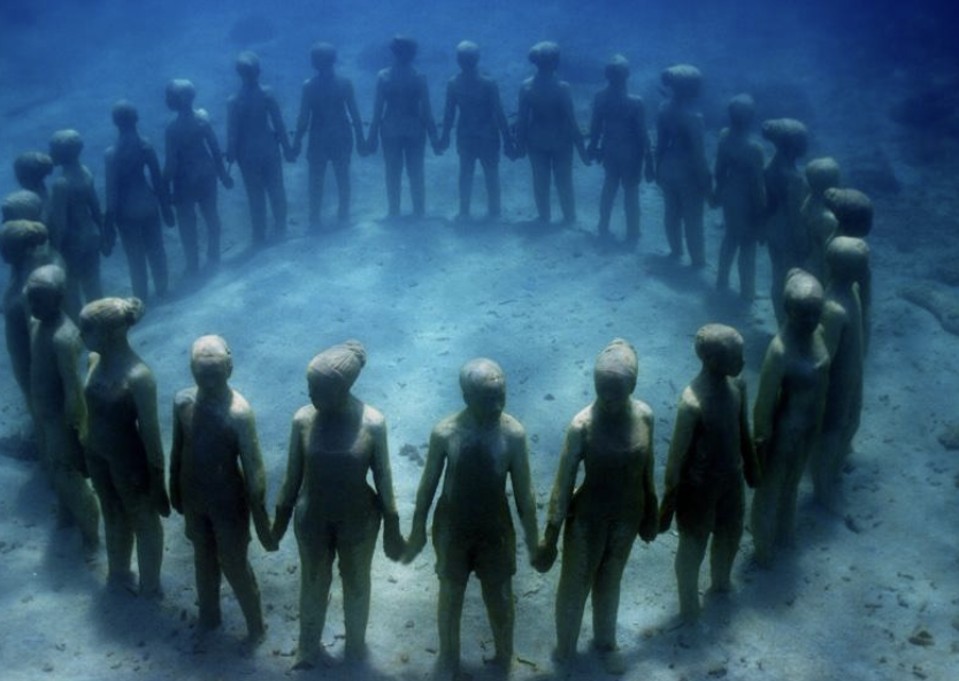The Caribbean has always boasted some of the best scuba diving in the world and in one island, Grenada, it’s gotten even better. The Grenada Tourism Authority has unveiled 31 new sculptures to be added to the Molinere Underwater Sculpture Park, creating a symbol of art, conservation and cultural pride in the country.
The unveiling of the new sculptures is part of a rehabilitation and upgrade initiative for the world’s first underwater sculpture park, which celebrates artistic expression and cultural richness by embracing the preservation of marine life. Adding a touch of local ingenuity, four mesmerizing sculptures – La Diablesse, Mama Glo, Bélé Dancer and Leatherback Turtle – created by local artist Troy Lewis were recently unveiled. The La Diablesse and Bélé Dancer, as well as the Coral Carnival, were inspired by a local design competition run by the Grenada Tourism Authority. The sculptures will rest as part of the underwater landscape, offering an enduring testament to the interplay between creativity and sustainability within the marine environment and diving world.
While many people choose to go scuba diving to see these structures, snorkelers can also view the art work from the surface.
Exploring the Marine Environment
What’s really interesting about these sculptures is that they seem frozen in time, half-buried in the sandy bottom and covered in coral and surrounded by colorful fish.
Some of the more popular sculptures include Vicissitudes, a ring of life-sized children holding hands and The Lost Correspondent, a figure sitting at a desk with a typewriter. The artist, Jason deCaires Taylor, turned the sea into an art gallery. Parrotfish, angelfish, and vibrant coral-dwelling creatures swim around and make their home in the sculptures and nearby reef. You can also see turtles and other marine life swim by. Each installations tells a unique story of the ocean’s symbiotic relationship with human creativity.
Diverse Dive Sites
Grenada, Carriacou and Petite Martinique have over 50 dives sites including colorful coral reefs, spectacular shipwrecks, exhilarating drift dives and the underwater sculpture park.
Another popular dive is the Bianca C, known as the Titanic of the Caribbean. The Bianca C was a mammoth cruise liner that met its tragic fate off the coast of Grenada in 1961. Today, it can be found on the ocean floor, an imposing structure that attracted divers seeking a glimpse into the past. Schools of barracuda patroll the decks, and lionfish hover near the entry points.
Grenada’s underwater world wasn’t just about the large wrecks and sculptures; it was also a haven for macro photography enthusiasts. Tiny seahorses, flamboyant nudibranchs, and elusive pipefish hide among the coral branches.
Night dives are also very popular in Grenada, with dive lights transforming the reef into a nocturnal wonderland. Octopuses emerged from their hiding places, their soft bodies pulsating with mesmerizing patterns. Lobsters and crabs roam the seafloor, and bioluminescent plankton sparkle like a celestial shower. Night diving is a reminder that the ocean never sleeps, and its mysteries unfold even in the darkest hours.

